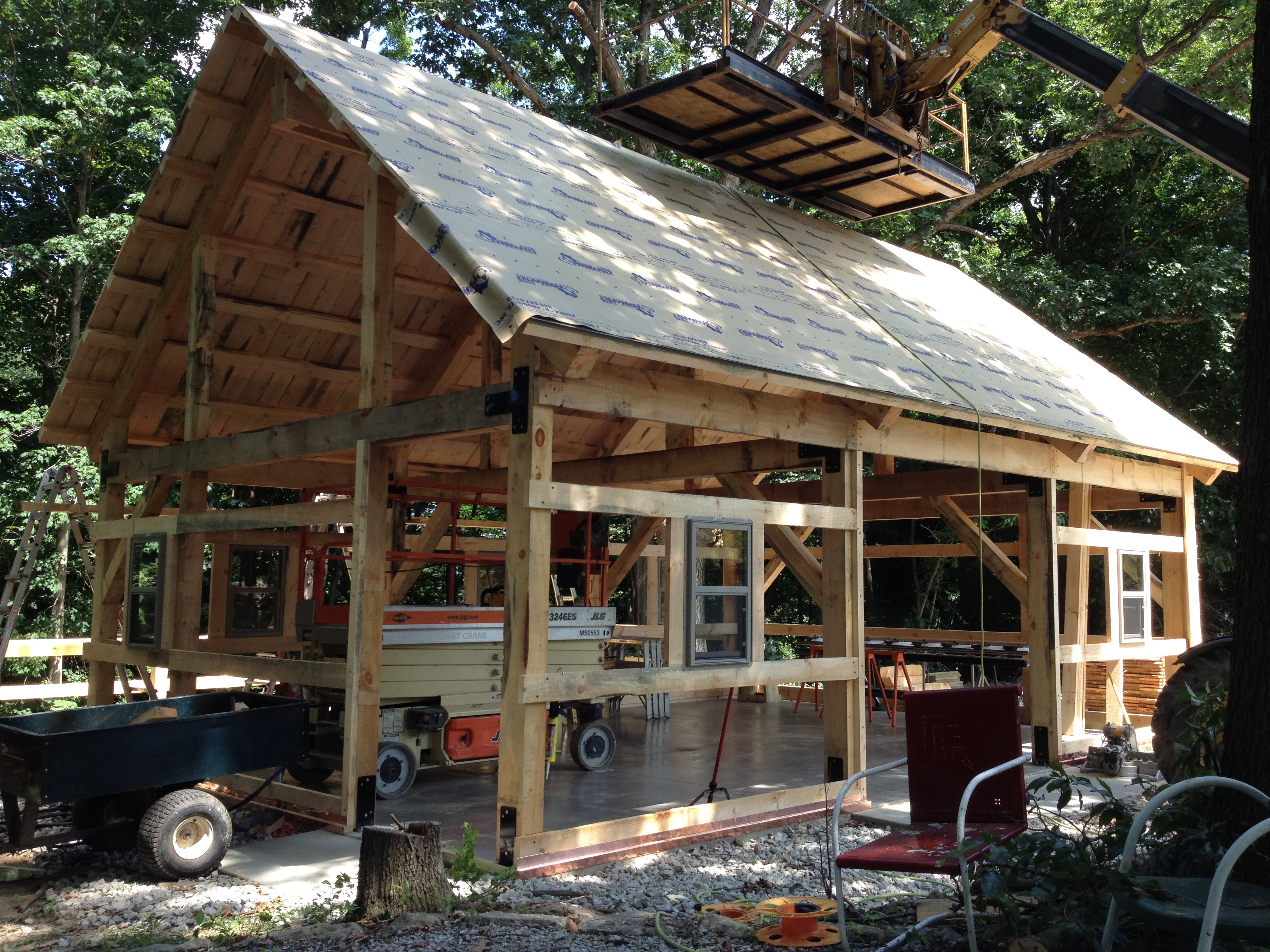
Building the Sugar Shack
This entire sugaring thing is the all fault of our forester, James Potthoff!
Well, that’s our story anyway.
And we’re sticking to it.
For the Sugar Shack to make sense you gotta go back with us a bit. Circa 2000, we were walking the property with forester James during an Indiana Classified Wildlife Habitat Program inspection when James pointed out that there were plenty of sugar maples here and we could make maple syrup.
Hmmm…we like maple syrup! And seriously, how much trouble could we get into?
From that point forward we were off and running.
So we purchased a “Tap My Trees” set of three buckets, lids, spiles and an instruction booklet (https://tapmytrees.com/), tapped three trees, pulled the car out of the garage, fired up turkey fryer made something…well…kind of like maple syrup.
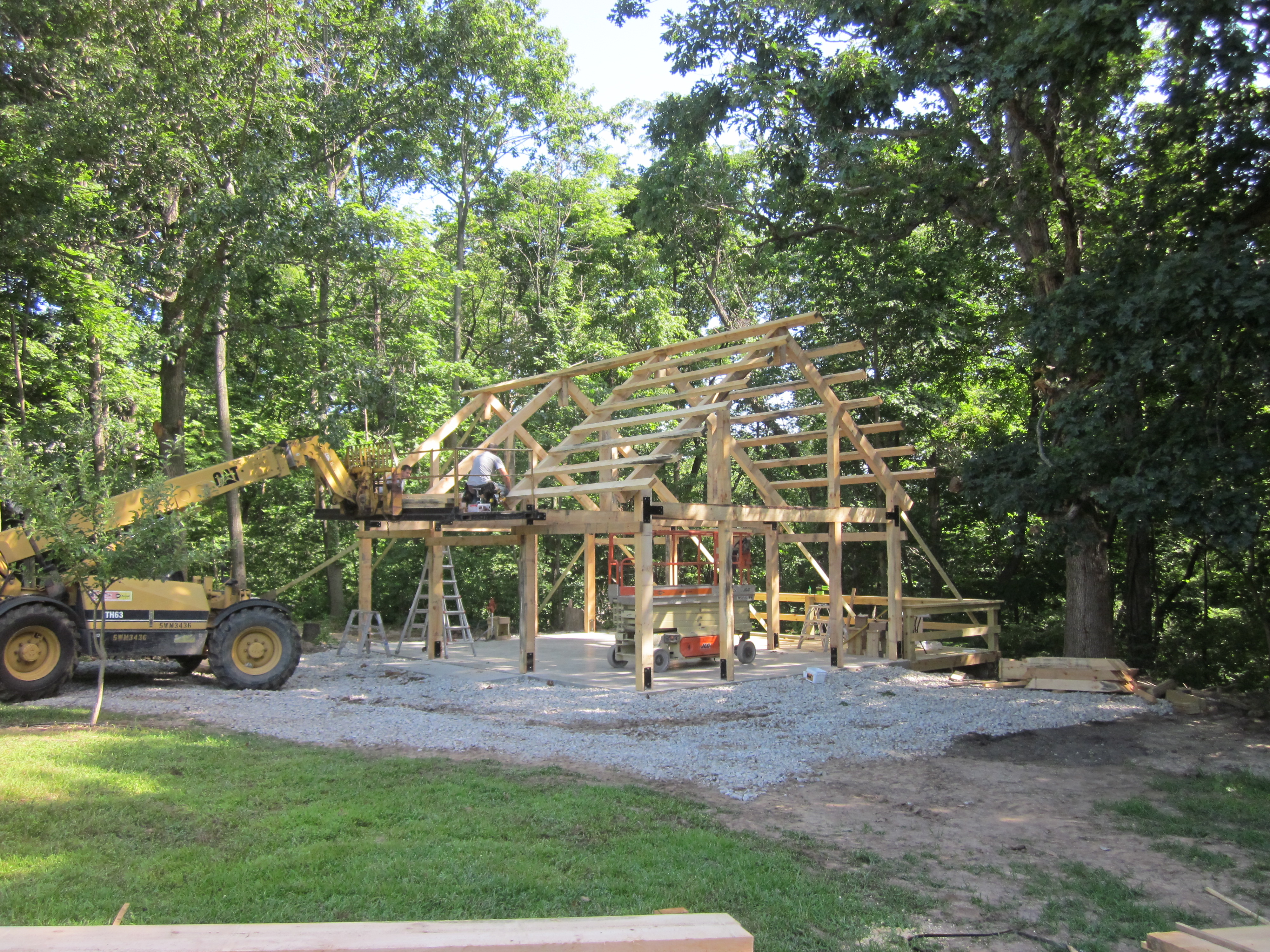 It tasted great and was lots of fun. So, we made more next year. And as the years rolled by we purchase more buckets and supplies including a large flat pan for use as an evaporator. Every year we tapped more trees . . . went from 3 trees to 12 to 30 to 50 and every year we made a bigger mess of the garage.
It tasted great and was lots of fun. So, we made more next year. And as the years rolled by we purchase more buckets and supplies including a large flat pan for use as an evaporator. Every year we tapped more trees . . . went from 3 trees to 12 to 30 to 50 and every year we made a bigger mess of the garage.
We also started keeping bees and making apple cider in the garage during those years.
Soon it was clear – we needed a building!
Designing the Sugar Shack
Our building needs included:
- Facilitate the production of maple syrup, apple cider and processing honey
- Equipment and supplies storage and maintenance
Our top priority was syrup making. So, we reviewed sugar shack design ideas such as those published by the University of Vermont and many other sources.
(http://www.uvm.edu/~uvmaple/sugarhousedesign.pdf)
What we discovered included how to size the maple sap evaporator and sap storage tanks according to the number of 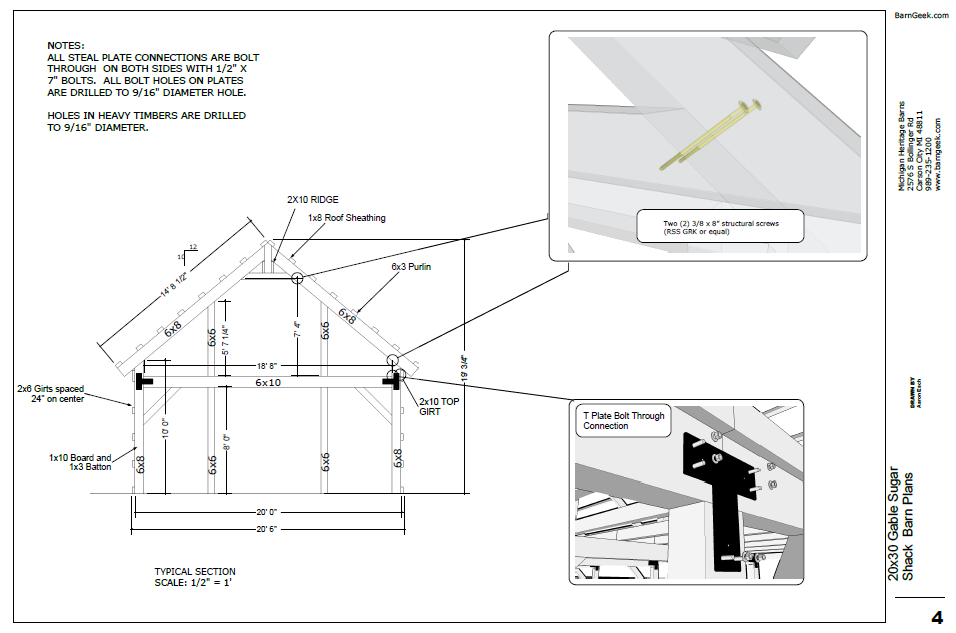 trees to be tapped. We also learned a lot more about design considerations for sugar shack ventilation and more.
trees to be tapped. We also learned a lot more about design considerations for sugar shack ventilation and more.
These best practices in Sugar Shack design drove our decisions regarding building size, roof pitch and cupola size and position.
We then actually drew process flow diagrams for the maple syrup making (sugaring) process, apple cider production and honey house process flows. These included the placement of needed equipment and the flow of materials, people and work.
We subsequently overlaid those three process flow diagrams onto a series of floor plan options and were finally able to determine our space requirements and floor space dimensions.
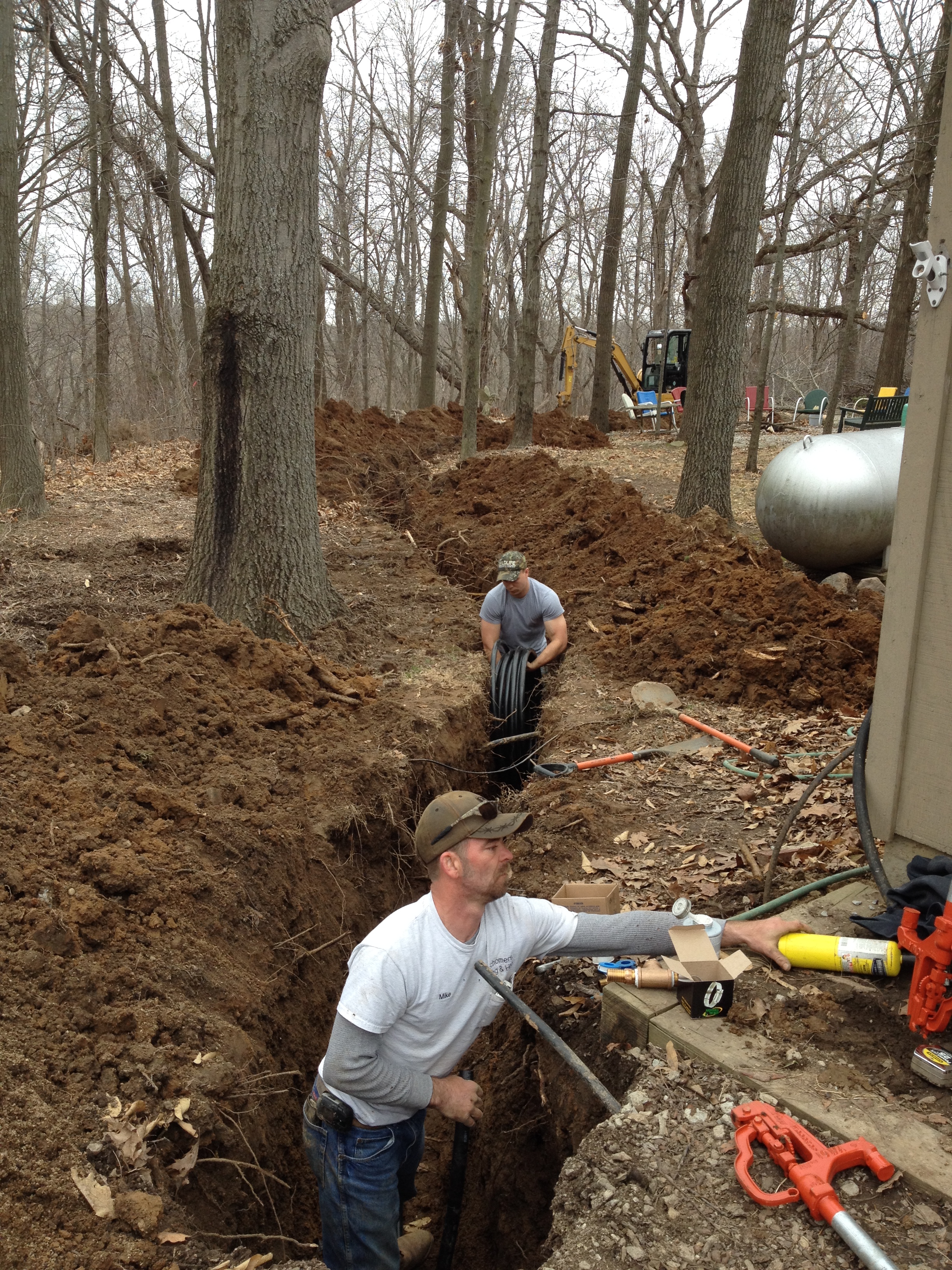 What worked best for us was a 20 X 30 foot structure with 10-foot walls and 20 feet tall at the gable with a cupola extending another three feet. The cupola is 2 feet by 4 feet and as mentioned above, extends 3 feet above the roofline with two 2 foot by 4 foot doors which may be individually adjusted for ventilation depending on weather conditions.
What worked best for us was a 20 X 30 foot structure with 10-foot walls and 20 feet tall at the gable with a cupola extending another three feet. The cupola is 2 feet by 4 feet and as mentioned above, extends 3 feet above the roofline with two 2 foot by 4 foot doors which may be individually adjusted for ventilation depending on weather conditions.
We then did research to determine the “look” of the building. We knew we wanted a post frame or a post and beam structure. We considered pole barns but really wanted something more like an old post beam barn structure. Ultimately we landed on Michigan Heritage Barns (Barn Geek) (http://www.barngeek.com/). Aaron Esch at Michigan Heritage Barns (Barn Geek) was very helpful in engineering our project based on our design and building function requirements.
Thanks to Aaron, the engineering work he did addressed all of our structural integrity and building performance issues. For example we knew we would be holding 200 to 300 gallons of maple sap in overhead tanks (That's about 2,400 pounds). And that in order for the cupola to function correctly, 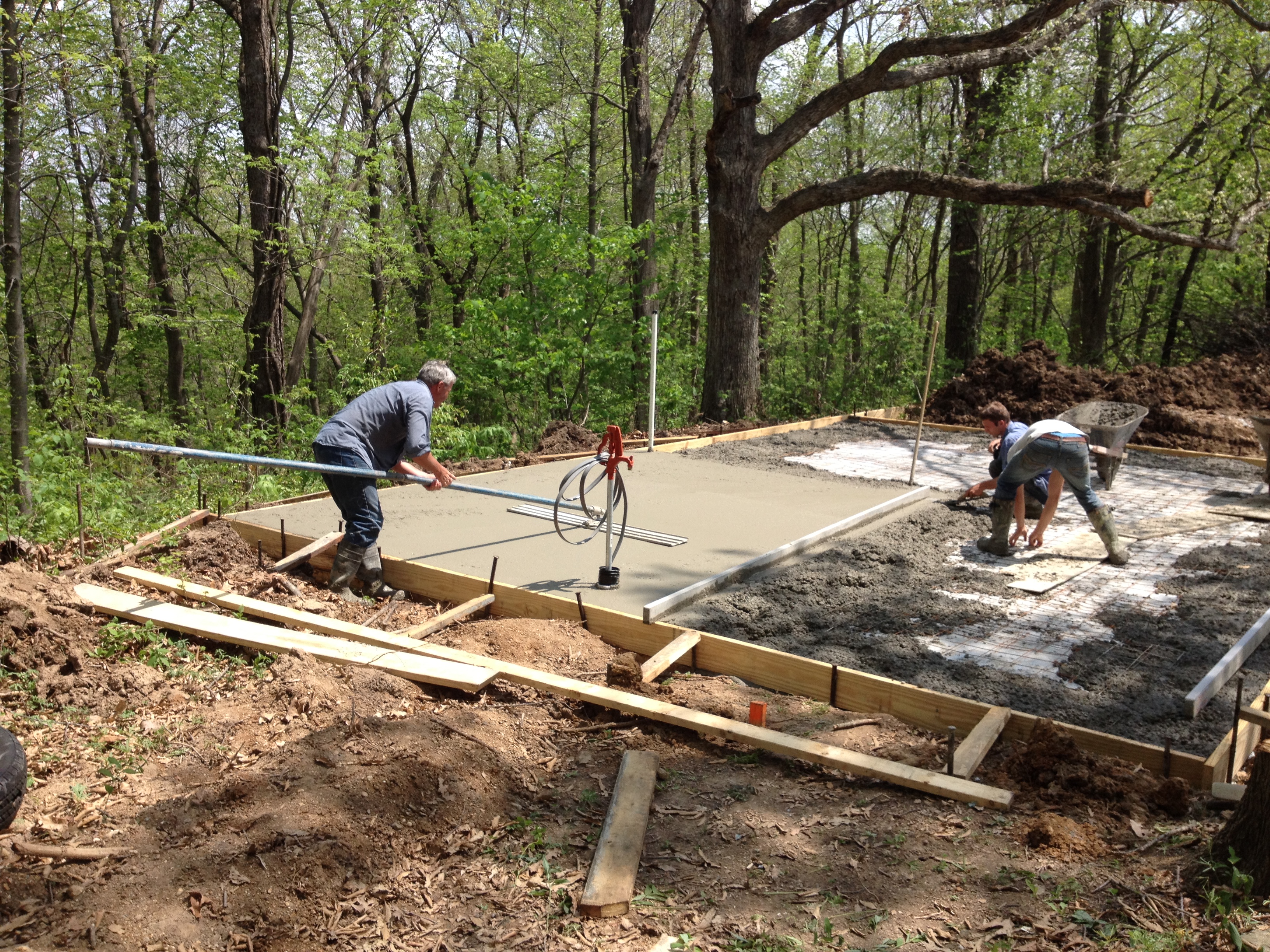 it had to be a specified height directly above the evaporator and sized correctly. This was Aaron’s first sugar shack project so we all learned together.
it had to be a specified height directly above the evaporator and sized correctly. This was Aaron’s first sugar shack project so we all learned together.
Once the engineering was complete and the plans were drawn and approved. We quickly had a materials estimate from Aaron in hand. We ordered the material from Barn Geek and went to work looking for a builder who would work with us and let us help in the construction process.
The Construction Process
It did not take long to select Blume Construction. Derek Blume did an excellent job in all aspects of construction. From unloading the materials to timely completion of a very well built structure…and at the end of the day, a great looking sugar shack!
One of the first steps was site preparation including trenching for utilities, e.g., propane, water and electric.
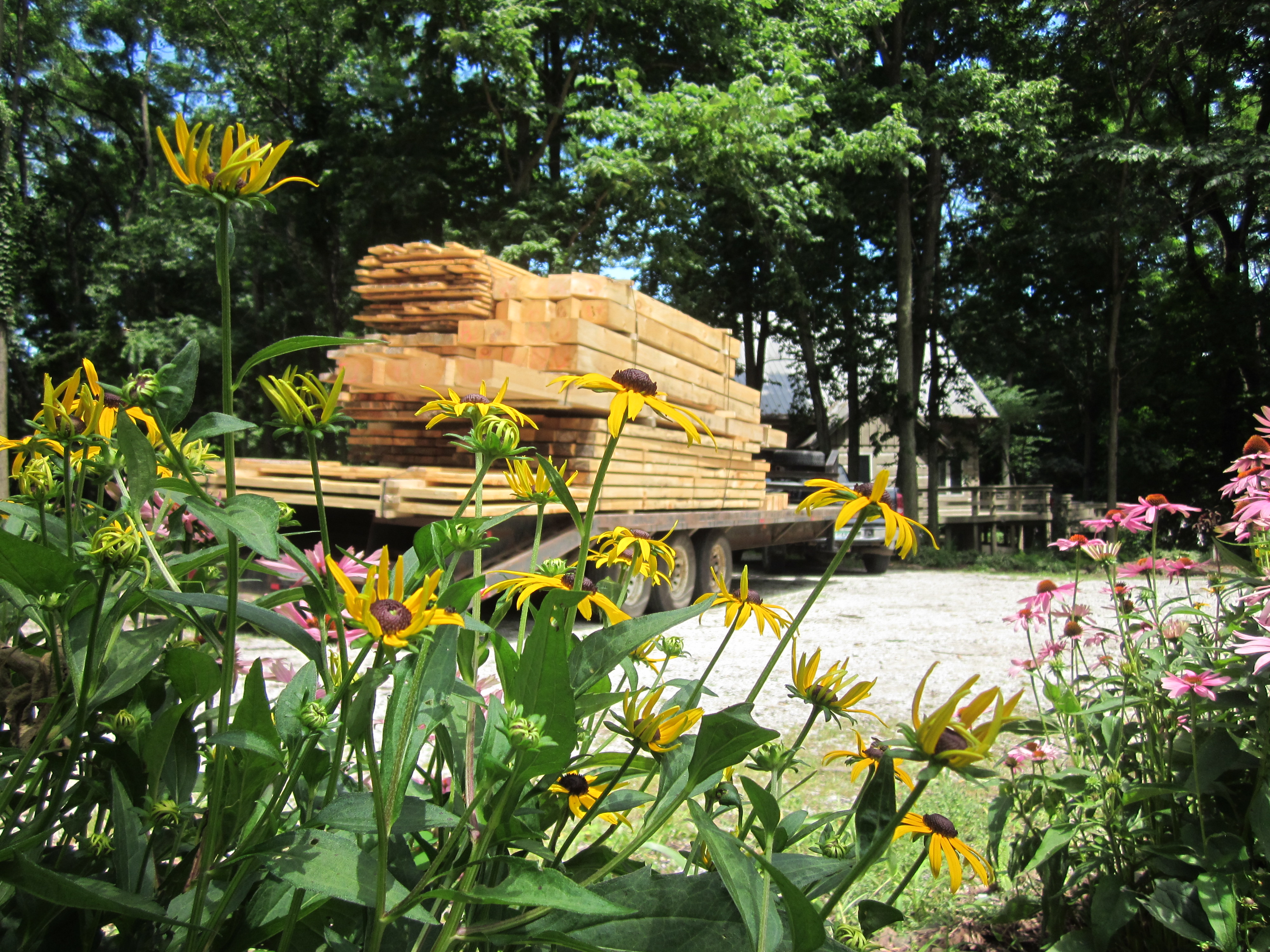 Then the pouring of the concrete pad by Hess Concrete of Rossville Indiana. They recommended a thickened edge pad on stone and it’s worked very well.
Then the pouring of the concrete pad by Hess Concrete of Rossville Indiana. They recommended a thickened edge pad on stone and it’s worked very well.
As the concrete cured, the fun stuff started the day the building materials arrived.
Derek Blume and his crew erected the post and beam structure.
The Springboro Tree Farms crew including Rich and Jim Hines along with some help from Ron Muir pitched in daily for about 2 months to help Derek and his team complete the project.
Finally the cupola was lifted into position and the roof was constructed.
Because we used “green” lumber the application of stain needed to be delayed one season.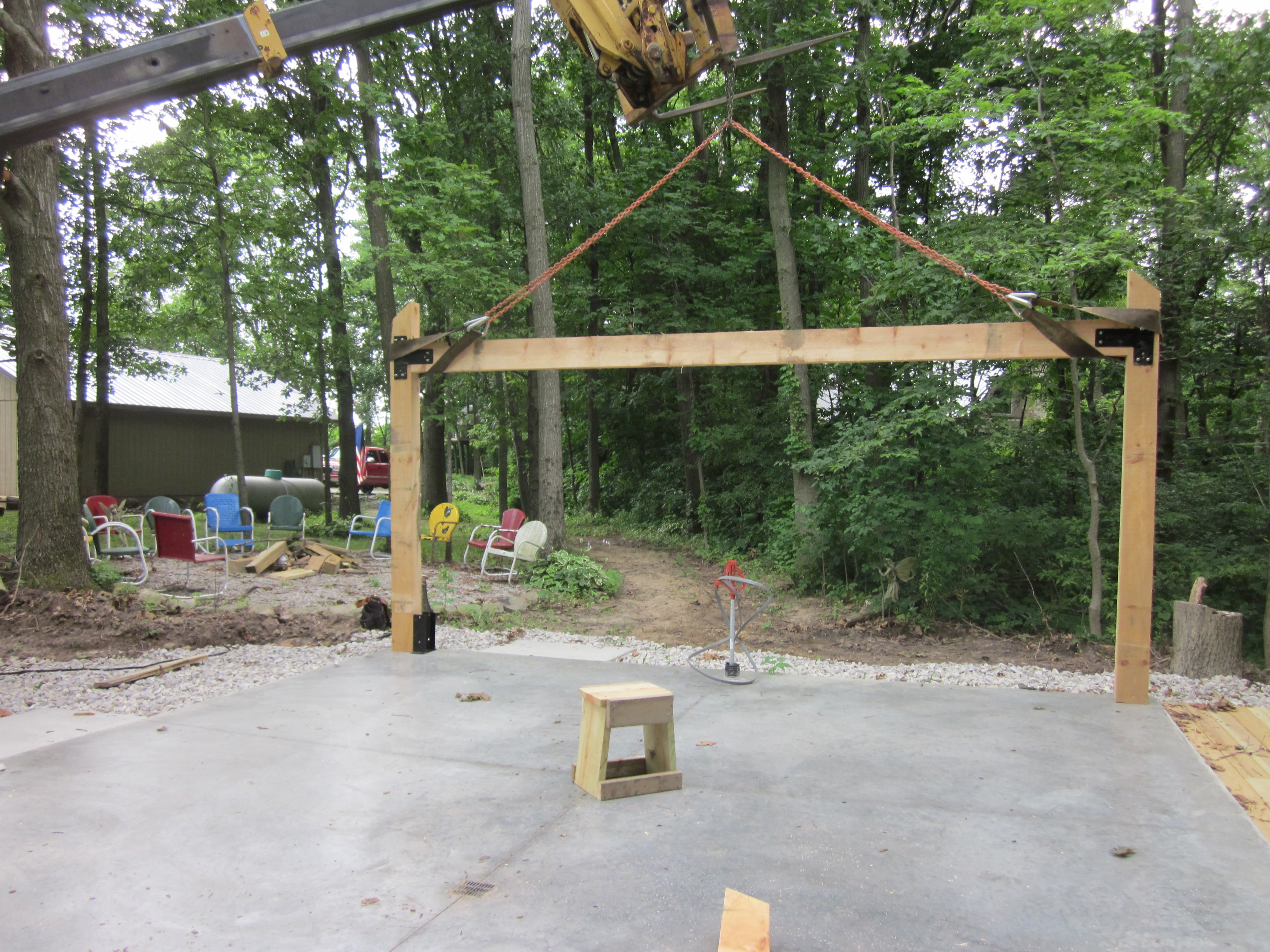
Next came the installation of the electrical system with some great help from our friend Dave Leuck and the folks at Brand Electric.
Once compete we added the wood-fired evaporator, the stack and the sap tanks and inside sap lines. The evaporators and much of the rest of the sugaring equipment was purchased from Sunrise Metal.
Other details included the installation of appliances and stainless steel counters.
It never ends
We’ve made several equipment and process changes as driven by changing needs. For example, the original design was scaled to process sap from up to 150 maple trees, We now tap more that twice that amount but the basic building still serves our needs because we left room for process flexibility i.e., adding reverse osmosis, ultra violet sap purification and addition honey processing equipment.
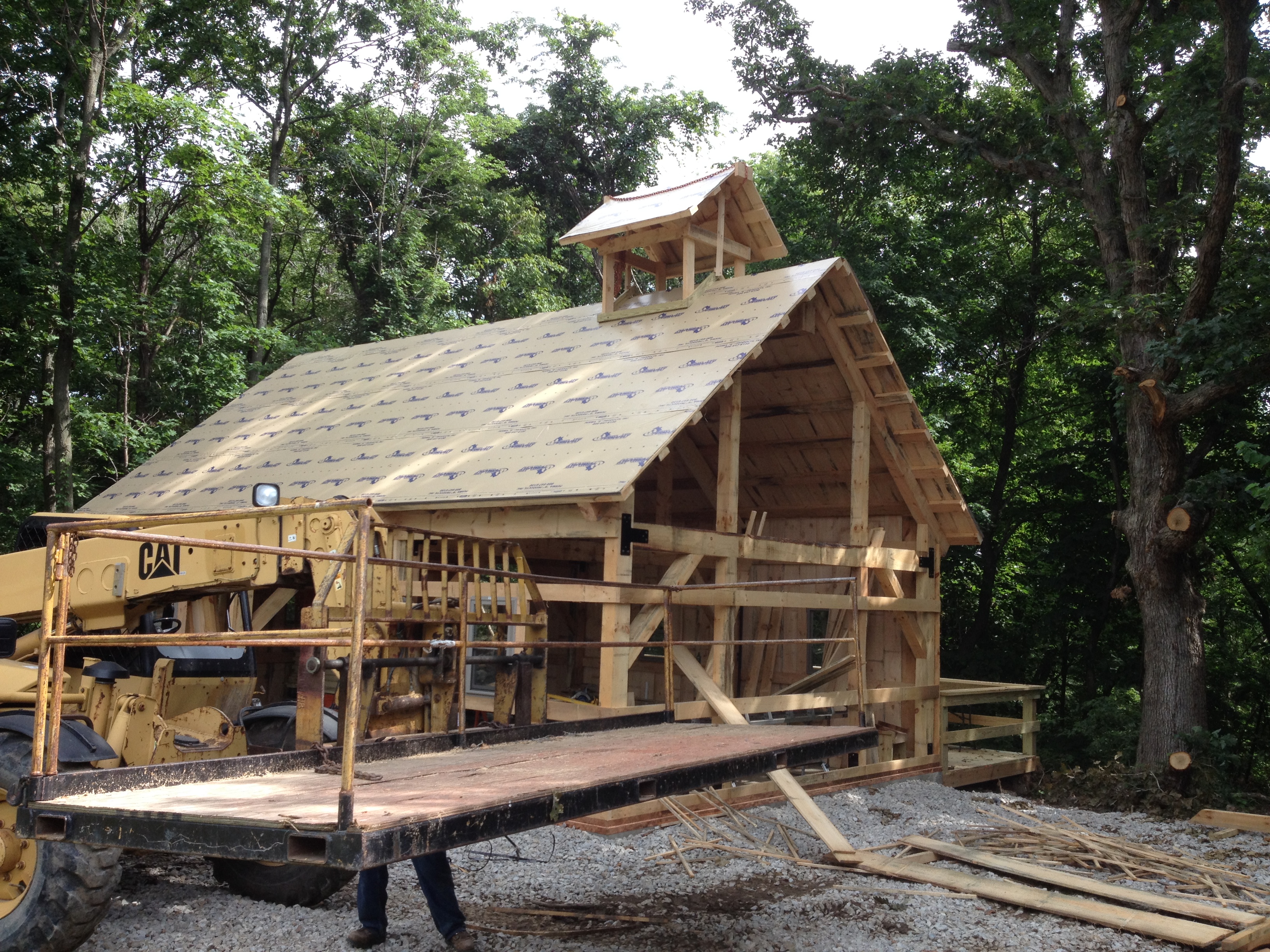 So while we may never really finish equipping and reimaging uses for the sugar shack, it will always be a focal point of all we do here.
So while we may never really finish equipping and reimaging uses for the sugar shack, it will always be a focal point of all we do here.
Oh...and while we're at it...how did the two large sap holding tanks get lifted into the sugar shack loft? Here's a short video from December 2015 that can answer that question.
https://www.facebook.com/1688180384802524/videos/1690756467878249/
Resources
http://www.barngeek.com/">http://www.barngeek.com/
Hess Concrete (765) 379-2848
Brand Electric https://brandelectric.com/
Shomers Plumbing Heating and Air Conditioning https://www.schomersplumbing.com/

